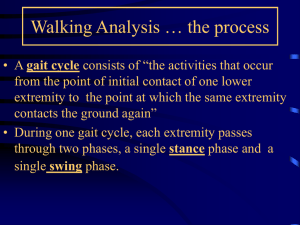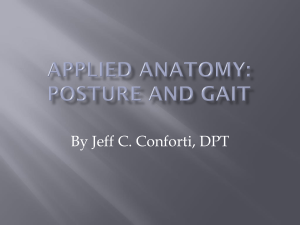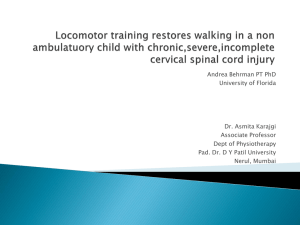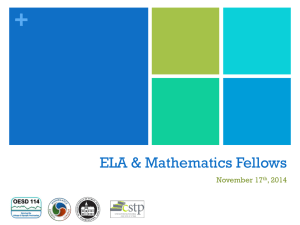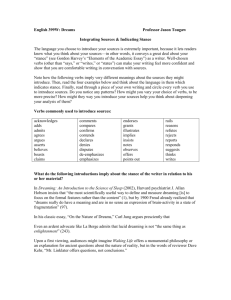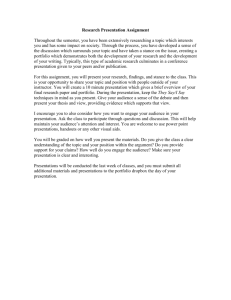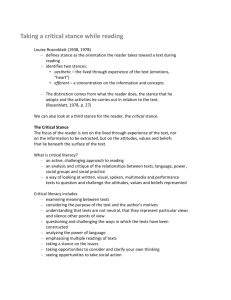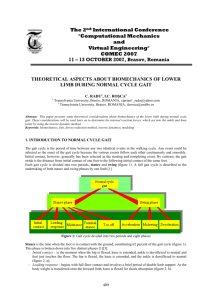Lecture 11-IntroToGait
advertisement
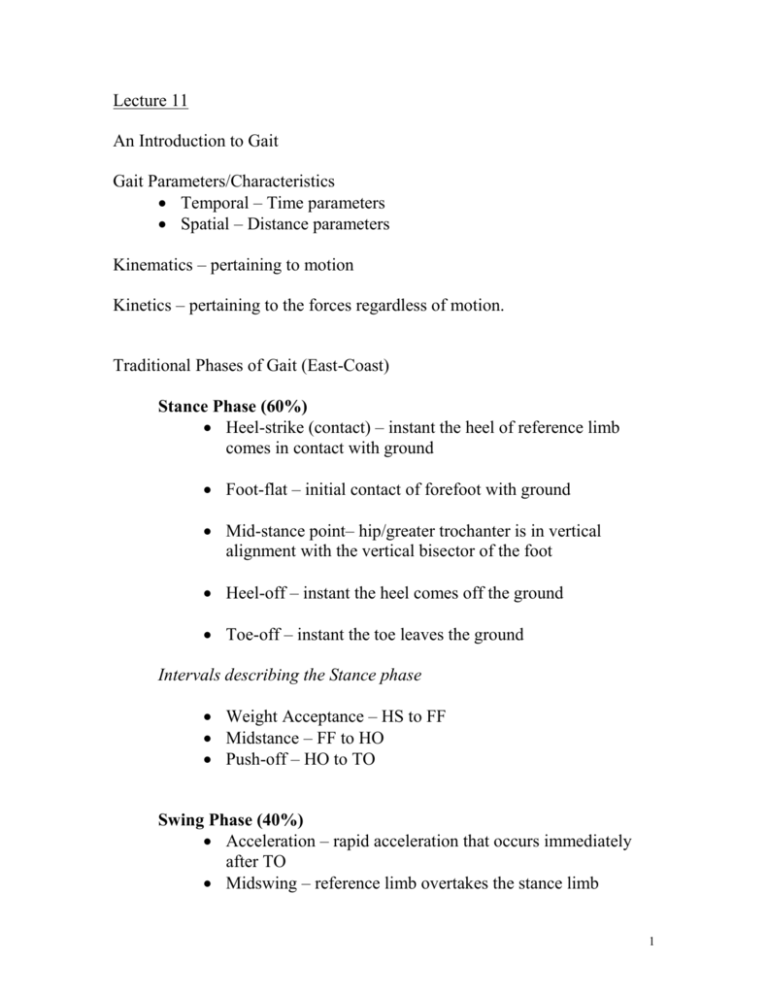
Lecture 11 An Introduction to Gait Gait Parameters/Characteristics Temporal – Time parameters Spatial – Distance parameters Kinematics – pertaining to motion Kinetics – pertaining to the forces regardless of motion. Traditional Phases of Gait (East-Coast) Stance Phase (60%) Heel-strike (contact) – instant the heel of reference limb comes in contact with ground Foot-flat – initial contact of forefoot with ground Mid-stance point– hip/greater trochanter is in vertical alignment with the vertical bisector of the foot Heel-off – instant the heel comes off the ground Toe-off – instant the toe leaves the ground Intervals describing the Stance phase Weight Acceptance – HS to FF Midstance – FF to HO Push-off – HO to TO Swing Phase (40%) Acceleration – rapid acceleration that occurs immediately after TO Midswing – reference limb overtakes the stance limb 1 Deceleration – reference limb decelerates preparing for HS Ranchos Los Amigos (RLA) – West Coast Stance Phase (60%) Initial Contact (IC) Loading Response (LR) Midstance (MSt) Terminal Stance (TSt) Preswing (PSw) Swing Phase (40%) Initial Swing (Isw) Midswing (MSw) Terminal Swing (TSw) Traditional RLA % of GC HA IC 0-2 Stance Phase (60%) FF MSt HO LR MSt TSt 0-10 10-30 30-50 TO PSw 50-60 Swing Phase (40%) AC MSw DC Isw MSw TSw 60-73 73-85 85-100 Spatial Parameters 1. Stride length – distance from point of IC of reference limb to the point of the next IC of same limb 4.2 ft. women / 4.8 ft. men / 4.6 ft. overall 2. Step length – distance from point of IC of reference limb to the point of IC of contralateral limb 2.1 ft. women / 2.4 ft. men / 2.3 ft. overall 3. Base of Support – perpendicular distance with reference to the progression line between posterior aspect of the heel of the reference limb and the posterior aspect of contralateral heel 2-4 inches 4. Angle of Toe Out – angle between line of progression and logitudinal axis of foot (normal 7 degrees). 2 Temporal Parameters 1. Cadence – number of steps/time (113 steps/minute) 2. Walking velocity – speed of ambulation on smooth, level surface 250 ft./min. women / 276 ft./min. men / 262 ft./min. overall 3. Stride duration – time to complete a single stride 5. Step duration – time to complete a step 6. Stance time – duration of stance phase 7. Double support time – duration of time when both limbs are in contact with ground (20% of GC) 8. Single support time – duration of time when a single limb is in contact with the ground (80% of GC) Range of Motion Table (14-1) Total ROM Hip Knee Ankle Stance 0-30 * 0 – 20 / 0 – 40 deg 0 – 10 dflex * 0 – 20 pflex Swing 20-30 deg 0- 60 deg 0 – 10 pflexion Other Gait Concepts / Terminology HAT / Passenger Unit – includes the head, arms, trunk, and pelvic girdle What causes the movements associated with gait? Forces Kinetics 3 1. 2. 3. 4. gravity muscular contraction inertia ground reaction forces (Newton’s 3rd law) Ground Reaction Force Vector (GRFV) – Body Force Vector As body weight (COG) falls toward the floor, it creates a force in the floor of equal magnitude but opposite in direction Relate the body vector to the joint centers to determine the magnitude and direction of the instability (moments) Imaginary line connecting COG and COP Figure 3.7 in Perry Walking is a series of controlled falls. Body Subdivisions Passenger Unit (HAT) – head, neck, trunk, and arms Carried rather than directly contributing to walking Locomotor Unit – lower extremities and pelvis 11 jts – lumbosacral(2), hip, knee, ankle, subtalar, MTPs Locomotor Functions 1. propulsion 2. stance stability – upright stability is maintained despite everchanging posture 3. shock absorption 4. energy conservation Basic objective of Locomotor Unit is to move the passenger unit forward along the line of progression. Body uses gravity as a propulsive force. Controlled falling from one stance limb to the other. 4
